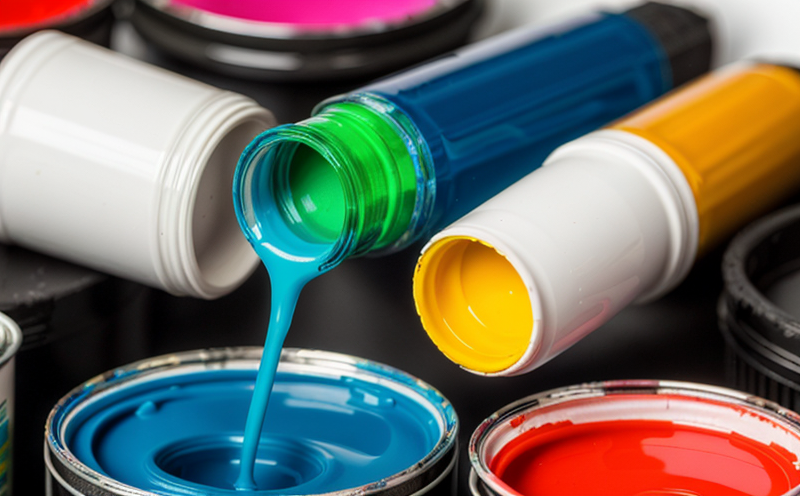ASTM D7396 Adhesion Testing of Thin Film Nanocoatings
The ASTM D7396 standard method is a critical tool in the quality assurance process for thin film nanocoatings used in paints and coatings. This test evaluates the adhesion strength between the topcoat or clear coat and the underlying substrate, which is essential to ensure durability and performance of the final product. Understanding this metric helps manufacturers identify potential weaknesses that could lead to premature failure.
The ASTM D7396 method employs a cross-hatch pattern to create a series of small cuts across the test specimen's surface. A cohesive fracture line between the coating and substrate indicates good adhesion, while delamination suggests poor performance. This test is particularly important for nanocoatings because their unique properties can affect how well they adhere to surfaces.
The standard specifies specific equipment requirements such as a cross-hatch testing machine capable of generating consistent patterns with precise angles and depths. Specimen preparation involves cleaning the substrate thoroughly, applying the coating according to manufacturer recommendations, allowing it to cure for an appropriate amount of time, then cutting out samples that are standardized in size.
Testing procedures include carefully aligning each sample within the cross-hatch machine before operating it to produce a defined pattern. After completion, technicians visually inspect the samples under magnification, noting any areas where delamination has occurred. Results are quantified by measuring the length of each fracture line or delaminated region.
Understanding ASTM D7396 also means familiarizing oneself with relevant ISO standards like ISO 4624, which provides additional guidance on adhesion tests. Compliance officers should ensure all labs performing these tests meet not only ASTM but also any local or regional regulations.
The importance of this test extends beyond mere quality control; it plays a crucial role in product development by providing data that can influence design decisions and material selection processes. For instance, if certain additives consistently result in lower adhesion scores across multiple trials, researchers may need to reconsider their formulation strategies.
Adhesion testing is just one aspect of ensuring the integrity of nanocoatings used in paints and coatings. By incorporating ASTM D7396 into your quality assurance protocols, you can gain valuable insights into the performance characteristics of these advanced materials.
Why It Matters
The adhesion properties of thin film nanocoatings significantly impact their overall durability and effectiveness. Poor adhesion can lead to premature delamination or flaking, reducing both aesthetic appeal and protective capabilities. In industries where coatings play a critical role—such as automotive manufacturing, architectural finishes, and marine applications—the ability to rely on robust adhesion ensures longevity and reliability.
For quality managers overseeing production lines, understanding the significance of ASTM D7396 helps them make informed decisions about process improvements or material changes. Compliance officers need to ensure that all testing adheres strictly to industry standards like this one, thereby avoiding non-compliance issues down the line.
R&D engineers benefit greatly from rigorous adherence tests because they provide empirical evidence supporting new formulations or manufacturing methods. Procurement teams can use these results when evaluating suppliers' products, knowing what criteria must be met for acceptable performance.
By emphasizing adhesion testing early in the development lifecycle, companies demonstrate their commitment to producing high-quality, reliable products that meet customer expectations and regulatory requirements.
Industry Applications
The application of ASTM D7396 is widespread across various sectors where thin film nanocoatings are employed. In the automotive industry, for example, this test ensures that topcoats applied to vehicle bodies adhere properly, preventing peeling or flaking over time.
Architectural coatings benefit from thorough adhesion testing as well, ensuring that exterior walls remain protected against weather elements like rain and sunlight without losing their finish integrity. This is especially important in regions with harsh climates where durability becomes a key factor.
In the marine sector, coating formulations need to withstand saltwater exposure while maintaining good adhesion properties. ASTM D7396 helps manufacturers develop coatings that can perform reliably even under extreme conditions.
These examples illustrate how ASTM D7396 contributes to overall industry standards by providing consistent methods for evaluating nanocoating performance across different environments and applications.
Use Cases and Application Examples
| Application Case | Description |
|---|---|
| Automotive Coatings | Evaluating adhesion between clear coat and primer to ensure long-lasting paint finish. |
| Marine Coatings | Determining whether the coating adheres strongly enough despite exposure to saltwater environments. |
| Architectural Finishes | Checking if the coating remains intact after prolonged exposure to harsh weather conditions. |
| Aerospace Paints | Assuring that protective layers stay securely attached during launch and operational phases. |
- Automotive manufacturers use ASTM D7396 to verify the adhesion between clear coat and primer.
- Marine companies apply this test to check how well their coatings perform in saltwater environments.
- Aerospace firms ensure that protective layers remain adhered during launch and operational phases.





